Advances, Challenges, and Future Perspectives of Microwave Reflectometry for Plasma Position and Shape Control on Future Nuclear Fusion Devices
Abstract
1. Introduction
2. Probing Plasmas with Microwave Reflectometry
3. Demonstration of the PPR Principle at ASDEX-Upgrade
4. On the Integration of a PPR System at COMPASS
5. Plasma Position Reflectometry at ITER
5.1. Thermal Loads and Material Testing
5.2. Performance Assessment of Waveguides Bends
- All samples showed a lack of (copper) coating near the edge of the flanges, as shown in Figure 10a, as well as in some spots near the flanges, as observed in Figure 10b. The lack of copper was also visible inside the waveguides along the corners formed by the inner walls and in the walls themselves.
- Marks were visible in the inner surface of the bend, probably caused by some tool inserted in the bend during bending, as depicted in Figure 10c,d.
- local shape deformation was clearly visible in all samples around the middle of the bend, as shown in Figure 10e, where, per specification, there should be a straight section due to the connection between the two hyperbolic-secant bends—as is visible in Figure 10f, the deformation extends to the inner wall of the waveguide, which anticipates performance issues.
- Figure 10e clearly shows that the received samples were not symmetric components as specified, and judging by the relative position of its flanges, it seems the samples were all slightly twisted around the propagation axis.
- Finally, measurements taken as part of the site acceptance tests have shown that the internal section of the received samples was about mm (both in height and width) smaller than the specified dimensions.
5.3. Avoiding Crosstalk in the In-Vessel Waveguide Flanges
5.4. Testing the Integration of the Antennas of Gaps 4 and 6 between Blanket Modules
- Ku band: GHz, GHz.
- Ka band: GHz, GHz, GHz, and GHz.
- Ka band: GHz, GHz, and GHz.
- Q band: GHz, GHz, and GHz.
- V band: GHz, GHz, GHz, and GHz.
5.5. Lessons Learned in ITER PPR
6. Microwave Reflectometry as a Plasma Position Diagnostic for DEMO
6.1. The DSC Concept
6.2. Main Achievements and Future Work on the Development of MW Reflectometry for DEMO
- the interface between the DSC and the BB, including the respective cooling services.
- the detailed definition of the antenna configurations in the first wall and the waveguide routing inside the DSC.
- the interface for attaching/detaching the waveguide extensions to/from the BB chimneys.
- the limited space available in the upper port (especially at the inboard) and the need to avoid toroidal bending of the waveguides.
- the displacements between the vacuum vessel and the blankets, which must be accommodated by the waveguide extensions, and the design of the in-vessel/ex-vessel waveguide transitions.
7. Plasma Position and Shape Reflectometry in DTT—A Test Bed for DEMO
8. Development of a Compact Reflectometer
9. Conclusions
Author Contributions
Funding
Institutional Review Board Statement
Informed Consent Statement
Data Availability Statement
Conflicts of Interest
References
- Santos, J.; Guimarãis, L.; Zilker, M.; Treutterer, W.; Manso, M.; ASDEX Upgrade Team. Reflectometry-based plasma position feedback control demonstration at ASDEX Upgrade. Nucl. Fusion 2012, 52, 032003. [Google Scholar] [CrossRef]
- Sabot, R.; Sirinelli, A.; Chareau, J.-M.; Giaccalone, J.-C. A dual source D-band reflectometer for density profile and fluctuations measurements in Tore-Supra. Nucl. Fusion 2006, 46, S685–S692. [Google Scholar] [CrossRef]
- Yeh, K.C.; Liu, C.H. Theory of Ionospheric Waves; Academic Press: Cambridge, MA, USA, 1972. [Google Scholar]
- Ginzburg, V.L. The Propagation of Electromagnetic Waves in Plasmas, 2nd ed.; Pergamon Press: Oxford, UK, 1970. [Google Scholar]
- Hutchinson, I.H. Principles of Plasma Diagnostics, 2nd ed.; Cambridge University Press: Cambridge, UK, 2002. [Google Scholar] [CrossRef]
- Bretz, N.L.; Kessel, C.; Doyle, E.J.; Vayakis, G. ITER Position Control Reflectometry—Conceptual Design. Diagnostics for Experimental Thermonuclear Fusion Reactors 2; Stott, P.E., Gorini, G., Prandoni, P., Sindoni, E., Eds.; Plenum: New York, NY, USA, 1998; pp. 129–137. [Google Scholar] [CrossRef]
- Santos, J.; Manso, M.; Varela, P. Plasma position measurements from ordinary FM-CW reflectometry on ASDEX Upgrade. Rev. Sci. Instrum. 2003, 74, 1489–1492. [Google Scholar] [CrossRef]
- Santos, J.; Zilker, M.; Guimarãis, L.; Treutterer, W.; Amador, C.; Manso, M. COTS-Based High-Data-Throughput Acquisition System for a Real-Time Reflectometry Diagnostic. IEEE Trans. Nucl. Sci. 2011, 58, 1751–1758. [Google Scholar] [CrossRef]
- Santos, J. Fast Reconstruction of Reflectometry Density Profiles on ASDEX Upgrade for Plasma Position Feedback Purposes. Ph.D. Thesis, Instituto Superior Técnico, Universidade de Lisboa, Lisbon, Portugal, 2022. [Google Scholar] [CrossRef]
- Santos, J.M.; Guimarãis, L.; Rapson, C.; Santos, G.; Silva, A.; Treutterer, W.; Zilker, M.; ASDEX Upgrade Team; EUROfusion MST1 Team. Real-time reflectometry—An ASDEX Upgrade DCS plugin App for plasma position and shape feedback control. Fusion Eng. Des. 2017, 123, 593–596. [Google Scholar] [CrossRef]
- Prisiazhniuk, D.; Krämer-Flecken, A.; Conway, G.D.; Happel, T.; Lebschy, A.; Manz, P.; Nikolaeva, V.; Stroth, U.; ASDEX Upgrade Team. Magnetic field pitch angle and perpendicular velocity measurements from multi-point time-delay estimation of poloidal correlation reflectometry. Plasma Phys. Control Fusion 2017, 59, 025013. [Google Scholar] [CrossRef]
- Silva, A. The ASDEX Upgrade Broadband Microwave Reflectometry System. Ph.D. Thesis, Instituto Superior Técnico, Universidade Técnica de Lisboa, Lisbon, Portugal, 2006. [Google Scholar]
- Santos, J.; Hacquin, S.; Manso, M. Frequency modulation continuous wave reflectometry measurements of plasma position in ASDEX Upgrade ELMy H-mode regimes. Rev. Sci. Instrum. 2004, 75, 3855–3858. [Google Scholar] [CrossRef]
- Lourenço, P.D.; Santos, J.M.; Havránek, A.; Bogár, O.; Havlicek, J.; Zaja, J.; Silva, A.; Batista, A.J.N.; Hron, M.; Pánek, R.; et al. Real-time plasma position reflectometry system development and integration on COMPASS tokamak. Fusion Eng. Des. 2020, 160, 112017. [Google Scholar] [CrossRef]
- Janky, F.; Havlicek, J.; Batista, A.J.N.; Kudlacek, O.; Seidl, J.; Neto, A.C.; Pipek, J.; Hron, M.; Mikulin, O.; Duarte, A.S.; et al. Upgrade of the COMPASS tokamak real-time control system. Fusion Eng. Des. 2014, 89, 186–194. [Google Scholar] [CrossRef]
- Neto, A.C.; Alves, D.; Boncagni, L.; Carvalho, P.J.; Valcarcel, D.F.; Barbalace, A.; De Tommasi, G.; Fernandes, H.; Sartori, F.; Vitale, E.; et al. A Survey of Recent MARTe Based Systems. IEEE Trans. Nucl. Sci. 2011, 58, 1482–1489. [Google Scholar] [CrossRef]
- Zajac, J.; Bogár, O.; Varanin, M.; Zacek, F.; Hron, M.; Pánek, R.; Nanobashvili, S.; Silva, A. Upgrade of the COMPASS tokamak microwave reflectometry system with I/Q modulation and detection. Fusion Eng. Des. 2017, 123, 911–914. [Google Scholar] [CrossRef]
- Vidal, C.; Luís, R.; Nietiadi, R.; Velez, N.; Varela, P. Thermal analysis of a waveguide section of the ITER plasma-position reflectometry system on the high-field side. Fusion Eng. Des. 2019, 146, 2389–2392. [Google Scholar] [CrossRef]
- Udintsev, V. System Design Description (DDD) 55.F3 Plasma Position Reflectometry; ITER Report 76MW26 v1.9; ITER Organization: Saint-Paul-lez-Durance, France, 2012. [Google Scholar]
- Varela, P.; Belo, J.H.; Silva, A.; da Silva, F. Design status of the in-vessel subsystem of the ITER Plasma Position Reflectometry system. J. Instrum. 2019, 14, C09002. [Google Scholar] [CrossRef]
- Nietiadi, Y.; Vidal, C.; Luís, R.; Varela, P. Thermal analyses of the in-vessel frontends of the ITER plasma position reflectometry system. Fusion Eng. Des. 2020, 156, 111599. [Google Scholar] [CrossRef]
- Belo, J.; Varela, P.; Ricardo, E.; Silva, A.; Quental, P. Performance assessment of critical waveguide bends for the ITER in-vessel plasma position reflectometry systems. Fusion Eng. Des. 2017, 123, 773–777. [Google Scholar] [CrossRef]
- Kane, Y. Numerical solution of initial boundary value problems involving maxwell’s equations in isotropic media. IEEE Trans. Antennas Propag. 1996, 14, 302–307. [Google Scholar] [CrossRef]
- Taflove, A.; Hagness, S.C. Computational Electrodynamics: The Finite-Difference Time-Domain Method, 3rd ed.; Artech House: Norwood, MA, USA, 2005. [Google Scholar]
- da Silva, F.; Pinto, M.C.; Després, B.; Heuraux, S. Stable explicit coupling of the Yee scheme with a linear current model in fluctuating magnetized plasmas. J. Comput. Phys. 2015, 295, 24–45. [Google Scholar] [CrossRef]
- Biel, W.; Albanese, R.; Ambrosino, R.; Ariola, M.; Berkel, M.V.; Bolshakova, I.; Brunner, K.J.; Cavazzana, R.; Cecconello, M.; Conroy, S.; et al. Diagnostics for plasma control—From ITER to DEMO. Fusion Eng. Des. 2019, 146, 465–472. [Google Scholar] [CrossRef]
- Biel, W.; Ariola, M.; Bolshakova, I.; Brunner, K.J.; Cecconello, M.; Duran, I.; Franke, T.; Giacomelli, L.; Giannone, L.; Janky, F.; et al. Development of a concept and basis for the DEMO diagnostic and control system. Fusion Eng. Des. 2022, 179, 113122. [Google Scholar] [CrossRef]
- Malaquias, A.; Silva, A.; Moutinho, R.; Luís, R.; Lopes, A.; Quental, P.B.; Prior, L.; Velez, N.; Policarpo, H.; Vale, A.; et al. Integration Concept of the Reflectometry Diagnostic for the Main Plasma in DEMO. IEEE Trans. Plasma Sci. 2018, 46, 451–457. [Google Scholar] [CrossRef]
- Jesenko, A.; Mazon, D.; Ariola, M.; Luís, R.; Treutterer, W. Diagnostics and Control (DC) System Requirements Document (SRD); EURO Fusion Report IDM: EFDA_D_2MNK4R_v3.0; European Space Agency: Paris, France, 2020. [Google Scholar]
- Marchiori, G.; De Masi, G.; Cavazzana, R.; Cenedese, A.; Marconato, N.; Moutinho, R.; Silva, A. Study of a Plasma Boundary Reconstruction Method Based on Reflectometric Measurements for Control Purposes. IEEE Trans. Plasma Sci. 2018, 46, 1285. [Google Scholar] [CrossRef]
- Ricardo, E.; da Silva, F.; Heuraux, S.; Silva, A. Assessment of a multi-reflectometers positioning system for DEMO plasmas. J. Instrum. 2019, 14, C08010. [Google Scholar] [CrossRef]
- Silva, A. Advanced Simulation Studies on Microwave Diagnostics under DEMO Conditions, Advanced Concept on in Vessel and Ex Vessel Components, Complete Set of Expected Performance Data of All MW Diagnostics; EURO Fusion Report IDM: EFDA_D_2P5AU9 v1.0; European Space Agency: Paris, France, 2020. [Google Scholar]
- Belo, J.; Nietiadi, Y.; Luís, R.; Silva, A.; Vale, A.; Gonçalves, B.; Franke, T.; Krimmer, A.; Biel, W. Design and integration studies of a diagnostics slim cassette concept for DEMO. Nucl. Fusion 2021, 61, 116046. [Google Scholar] [CrossRef]
- Luís, R.; Moutinho, R.; Prior, L.; Quental, P.B.; Lopes, A.; Policarpo, H.; Velez, N.; Vale, A.; Silva, A.; Malaquias, A. Nuclear and Thermal Analysis of a Reflectometry Diagnostics Concept for DEMO. IEEE Trans. Plasma Sci. 2018, 46, 1247–1253. [Google Scholar] [CrossRef]
- Luís, R.; Nietiadi, Y.; Belo, J.H.; Silva, A.; Vale, A.; Malaquias, A.; Gonçalves, B.; da Silva, F.; Santos, J.; Ricardo, E.; et al. A diagnostics slim cassette for reflectometry measurements in DEMO: Design and simulation studies. Fusion Eng. Des. 2023, 190, 113512. [Google Scholar] [CrossRef]
- Nietiadi, Y.; Luís, R.; Silva, A.; Ricardo, E.; Gonçalves, B.; Franke, T.; Biel, W. Nuclear and thermal analysis of a multi-reflectometer system for DEMO. Fusion Eng. Des. 2021, 167, 112349. [Google Scholar] [CrossRef]
- Nietiadi, Y.; Luís, R.; Silva, A.; Belo, J.H.; Vale, A.; Malaquias, A.; Gonçalves, B.; da Silva, F.; Santos, J.; Ricardo, E.; et al. Thermomechanical analysis of a multi-reflectometer system for DEMO. Fusion Eng. Des. 2023, 190, 113530. [Google Scholar] [CrossRef]
- Keep, J.; Wood, S.; Gupta, N.; Coleman, M.; Loving, A. Remote handling of DEMO breeder blanket segments: Blanket transporter conceptual studies. Fusion Eng. Des. 2017, 124, 420–425. [Google Scholar] [CrossRef]
- Nietiadi, Y. Nuclear Technology and Engineering Studies on Reflectometry Systems for ITER and DEMO. Ph.D. Thesis, Instituto Superior Técnico, Universidade de Lisboa, Lisbon, Portugal, 2022. [Google Scholar]
- Zhu, Y.; Yu, J.-H.; Chen, M.; Tobias, B.; Luhmann, N.C. New Trends in Microwave Imaging Diagnostics and Application to Burning Plasma. IEEE Trans. Plasma Sci. 2019, 47, 2110–2130. [Google Scholar] [CrossRef]
- Meschino, S.; Ceccuzzi, S.; Mirizzi, F.; Pajewski, L.; Schettini, G.; Artaud, J.F.; Bae, Y.S.; Belo, J.H.; Berger-By, G.; Bernard, J.M.; et al. Bends in oversized rectangular waveguide. Fusion Eng. Des. 2011, 86, 746–749. [Google Scholar] [CrossRef]
- Ricardo, E.; Varela, P.; Silva, A.; Gonçalves, B. Assessment and performance optimization of the ITER plasma position reflectometry in-vessel oversized waveguide bends. Fusion Eng. Des. 2015, 98–99, 1593–1596. [Google Scholar] [CrossRef]
- da Silva, F.; Ferreira, J.; Santos, J.; Heuraux, S.; Ricardo, E.; De Masi, G.; Tudisco, O.; Cavazzana, R.; D’Arcangelo, O. Assessment of measurement performance for a low field side IDTT plasma position reflectometry system. Fusion Eng. Des. 2021, 168, 112405. [Google Scholar] [CrossRef]
- da Silva, F.; Heuraux, S.; Hacquin, S.; Manso, M.E. Unidirectional transparent signal injection in finite-difference time-domain electromagnetic codes –application to reflectometry simulations. J. Comput. Phys. 2005, 203, 467. [Google Scholar] [CrossRef]
- da Silva, F.; Ricardo, E.; Ferreira, J.; Santos, J.; Heuraux, S.; Silva, A.; Ribeiro, T.; De Masi, G.; Tudisco, O.; Cavazzana, R.; et al. Benchmarking 2D against 3D FDTD codes for the assessment of the measurement performance of a low field side plasma position reflectometer applicable to IDTT. J. Instrum. 2022, 17, C01017. [Google Scholar] [CrossRef]
- Silva, A.; Dias, J.; Santos, J.; da Silva, F.; Gonçalves, B. FM-CW compact reflectometer using DDS signal generation. J. Instrum. 2021, 16, C11005. [Google Scholar] [CrossRef]
- Meneses, L.; Cupido, L.; Manso, M.E.; JET-EFDA Contributors. New frequency translation technique for FM-CW reflectometry. Rev. Sci. Instrum. 2010, 81, 10D924. [Google Scholar] [CrossRef]
- Zhu, Y.; Chen, Y.; Yu, J.-H.; Domier, C.; Yu, G.; Liu, X.; Kramer, G.; Ren, Y.; Diallo, A.; Luhmann, N.C.; et al. System-on-chip approach microwave imaging reflectometer on DIII-D tokamak. Rev. Sci. Instrum. 2022, 93, 113509. [Google Scholar] [CrossRef]
- Vizvary, Z.; Arter, W.; Bachmann, C.; Barret, T.R.; Chuilon, B.; Cooper, P.; Flynn, E.; Firdaouss, M.; Franke, T.; Gerardin, J.; et al. European DEMO first wall shaping and limiters design and analysis status. Fusion Eng. Des. 2020, 158, 111676. [Google Scholar] [CrossRef]
- da Silva, F.; Heuraux, S.; Ribeiro, T. Introducing REFMULF, a 2D full polarization code and REFMUL3, a 3D parallel full wave Maxwell code. In Proceedings of the 13th International Reflectometry Workshop for Fusion Plasma Diagnostics—IRW13, Daejeon, Republic of Korea, 10–12 May 2017. [Google Scholar]
- Ricardo, E.; da Silva, F.; Heuraux, S.; Silva, A. On the edge turbulence effects on the density profile reconstruction using O-mode reflectometers. Fusion Eng. Des. 2021, 171, 112652. [Google Scholar] [CrossRef]
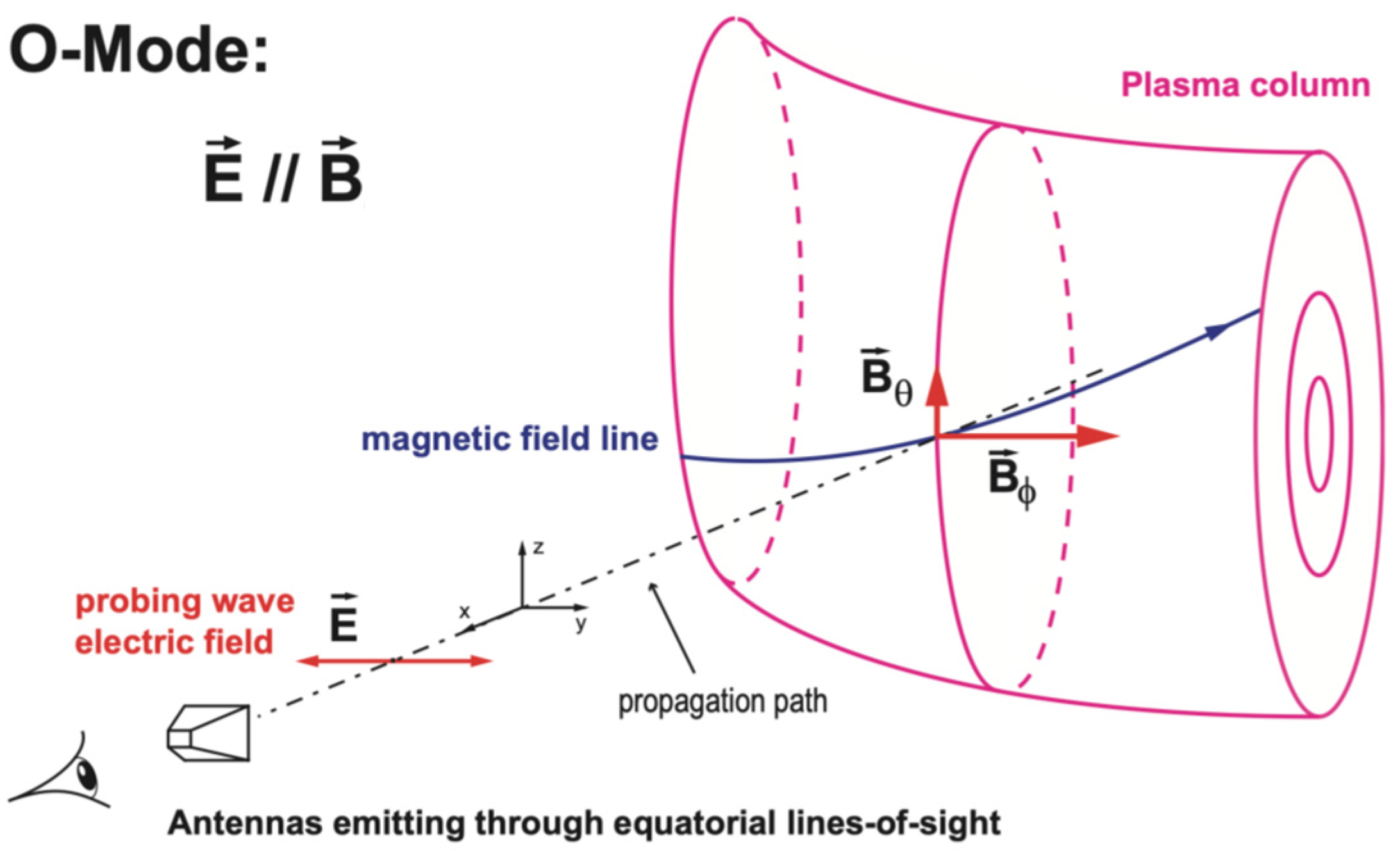





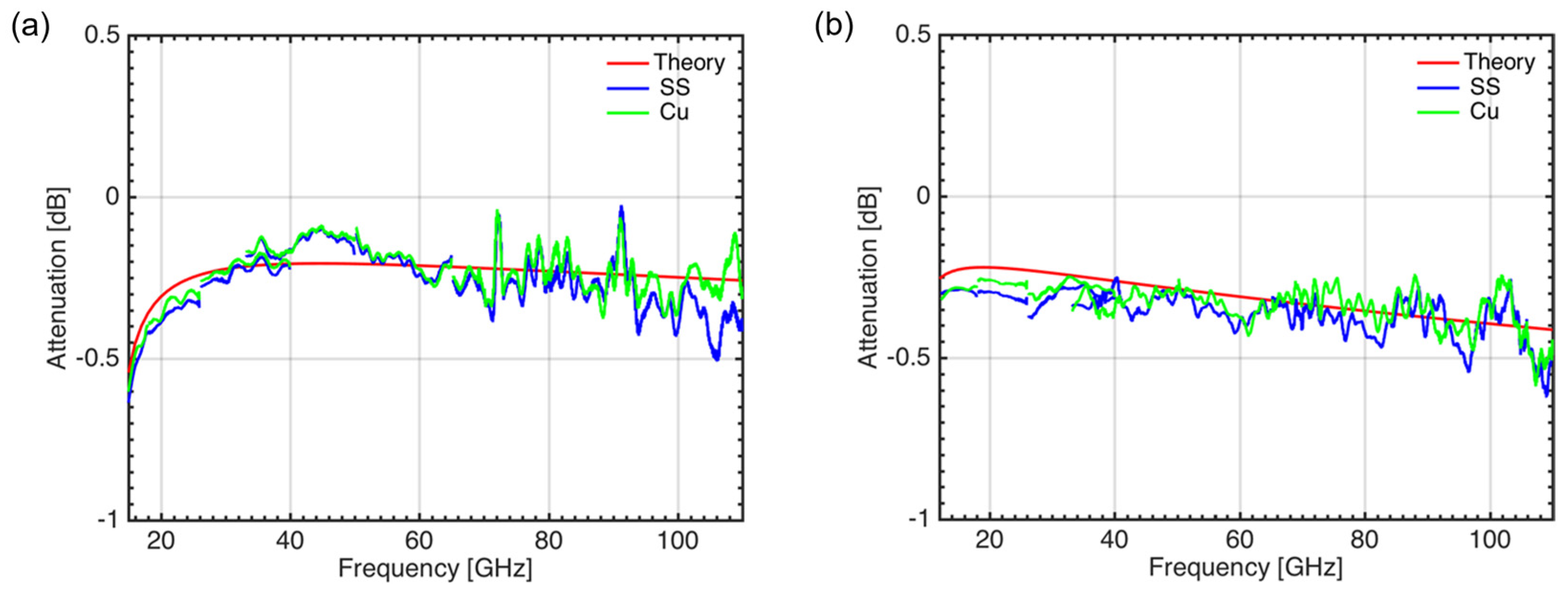
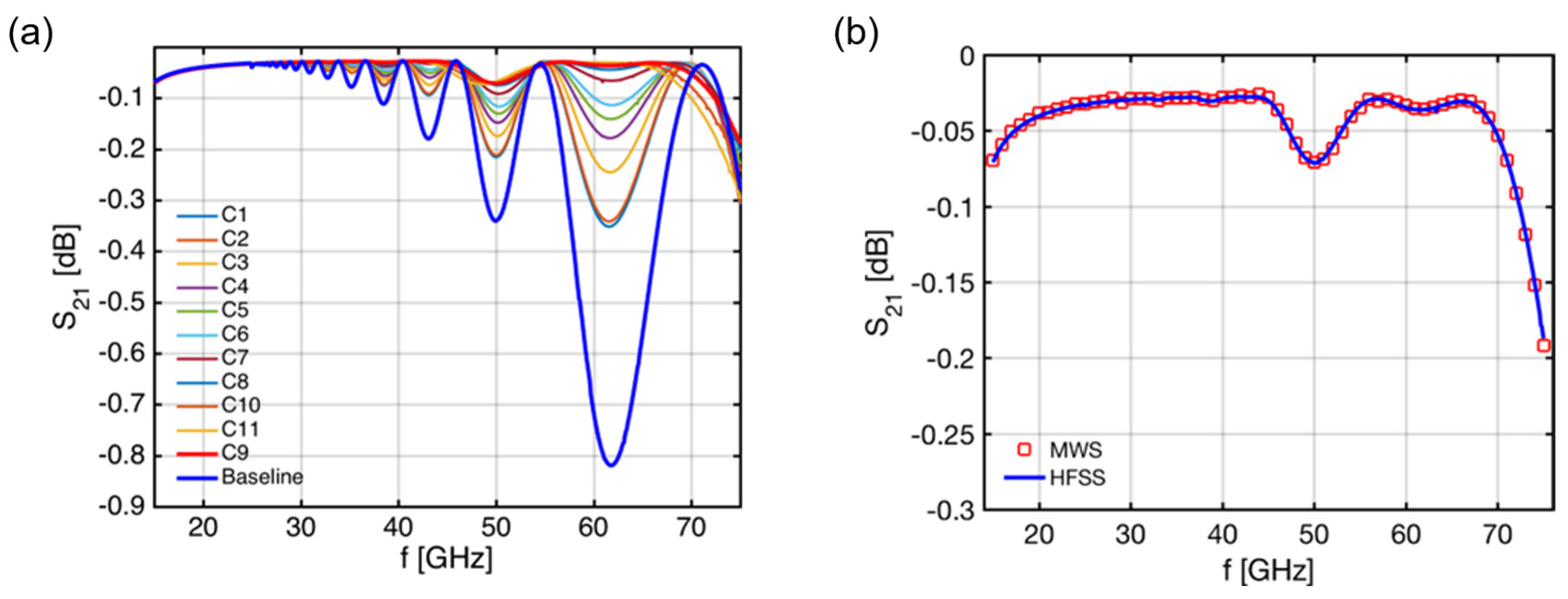
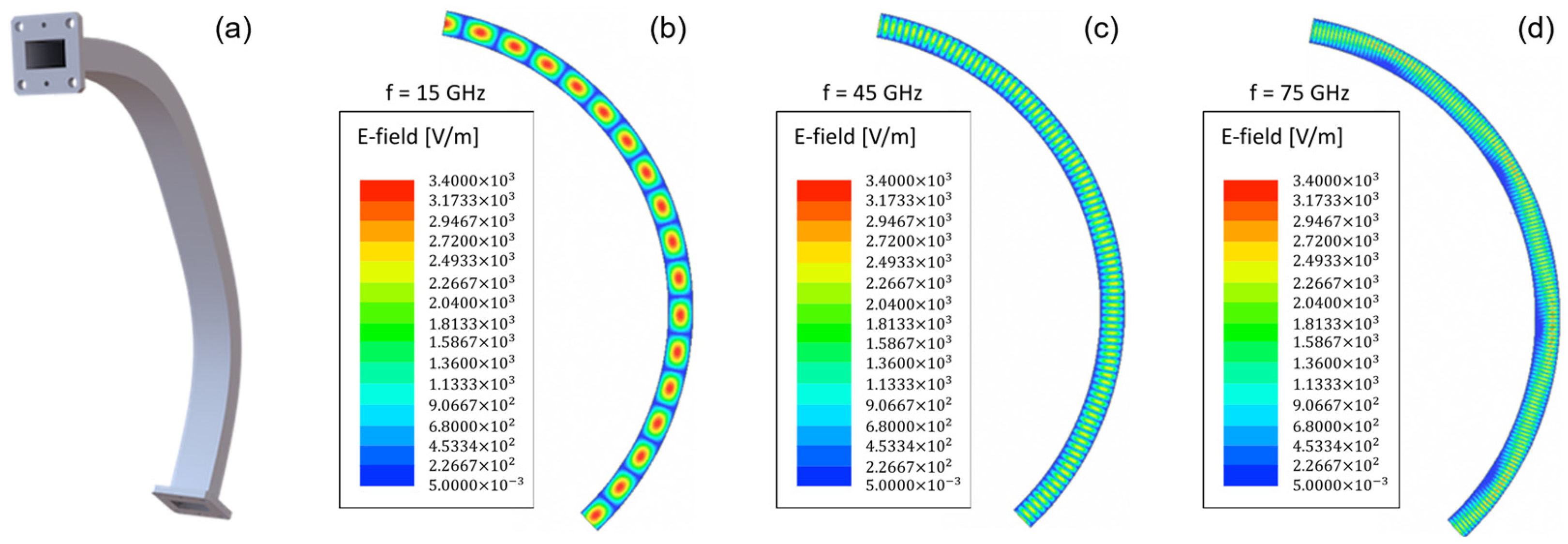
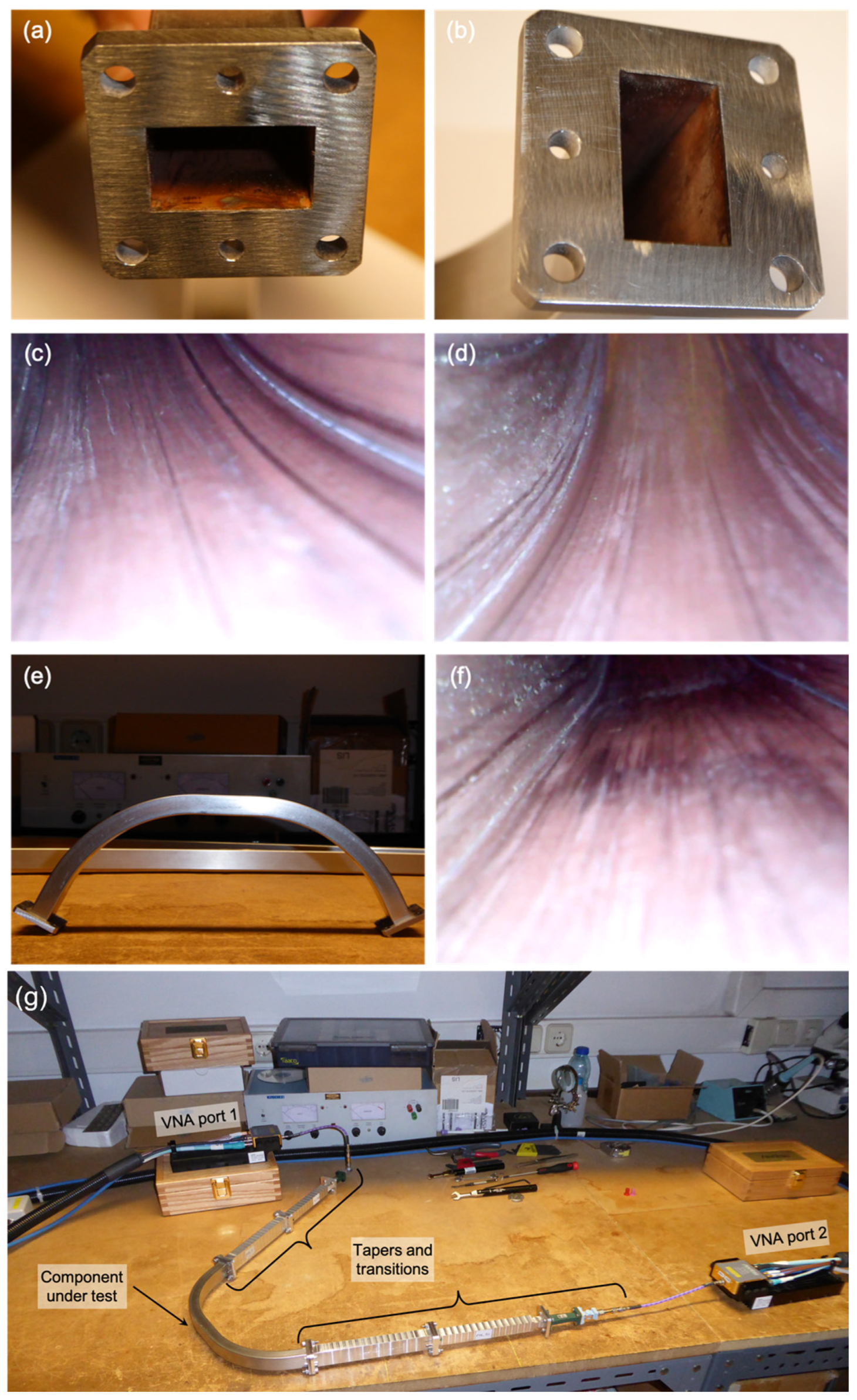
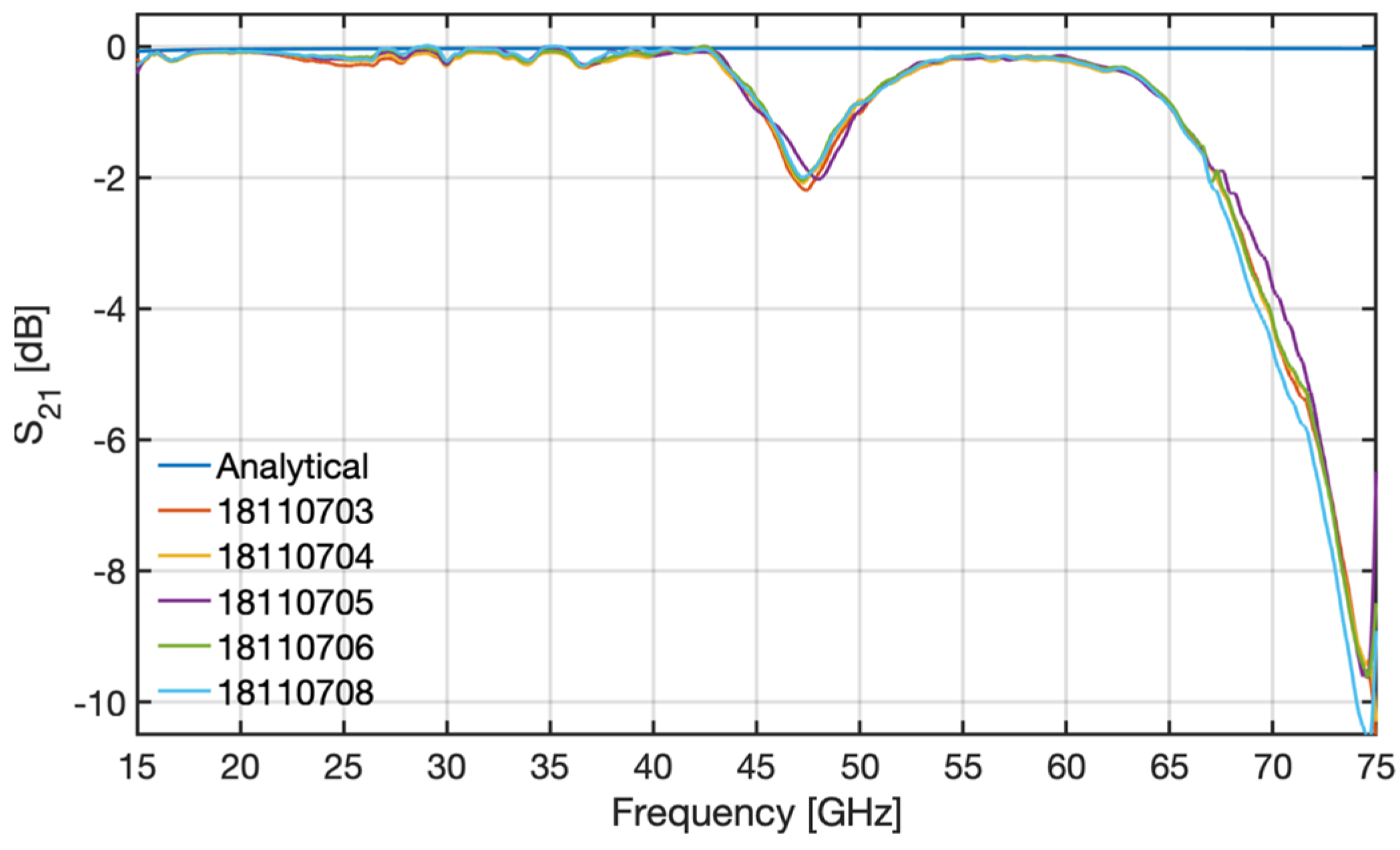
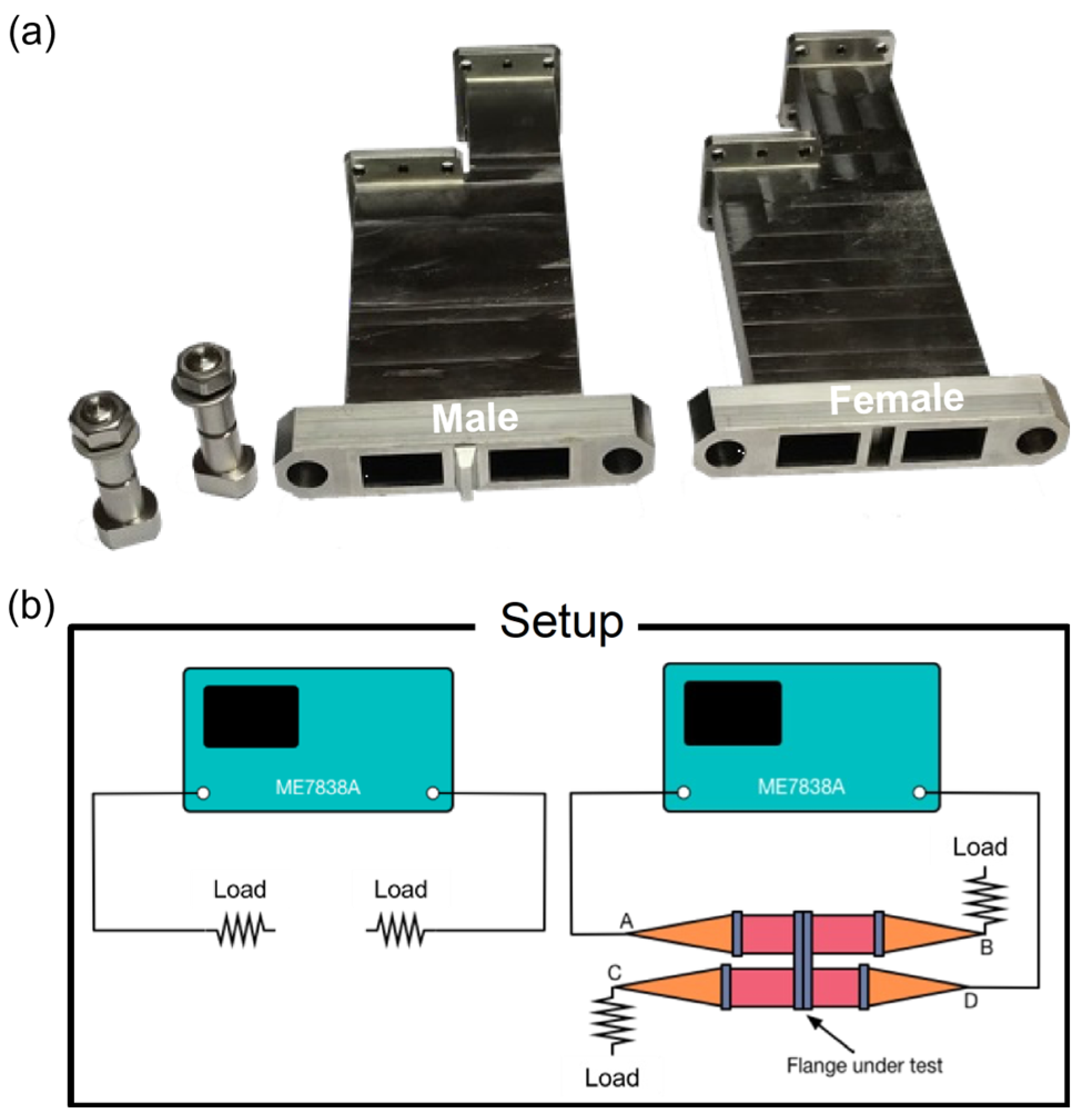
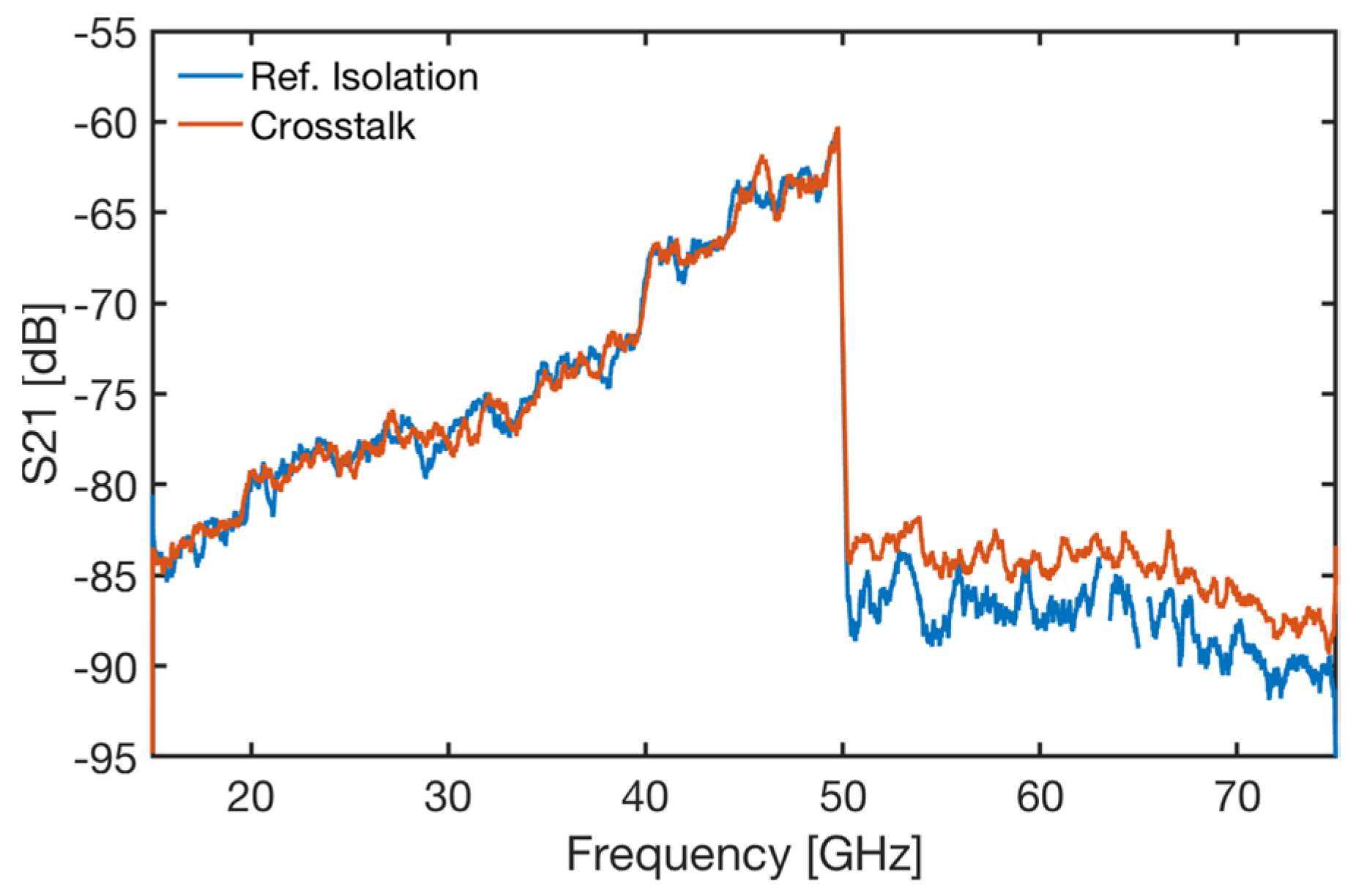

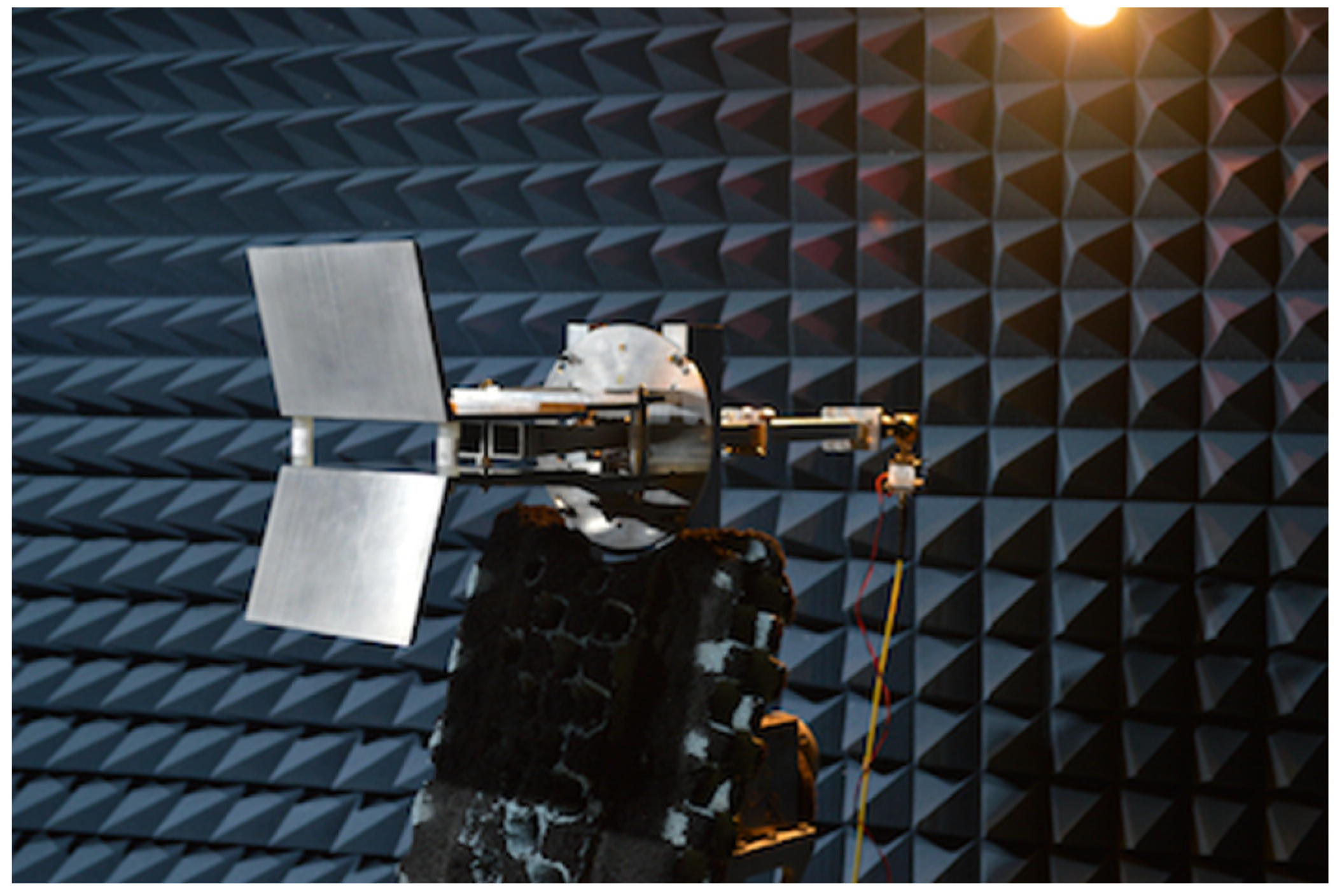

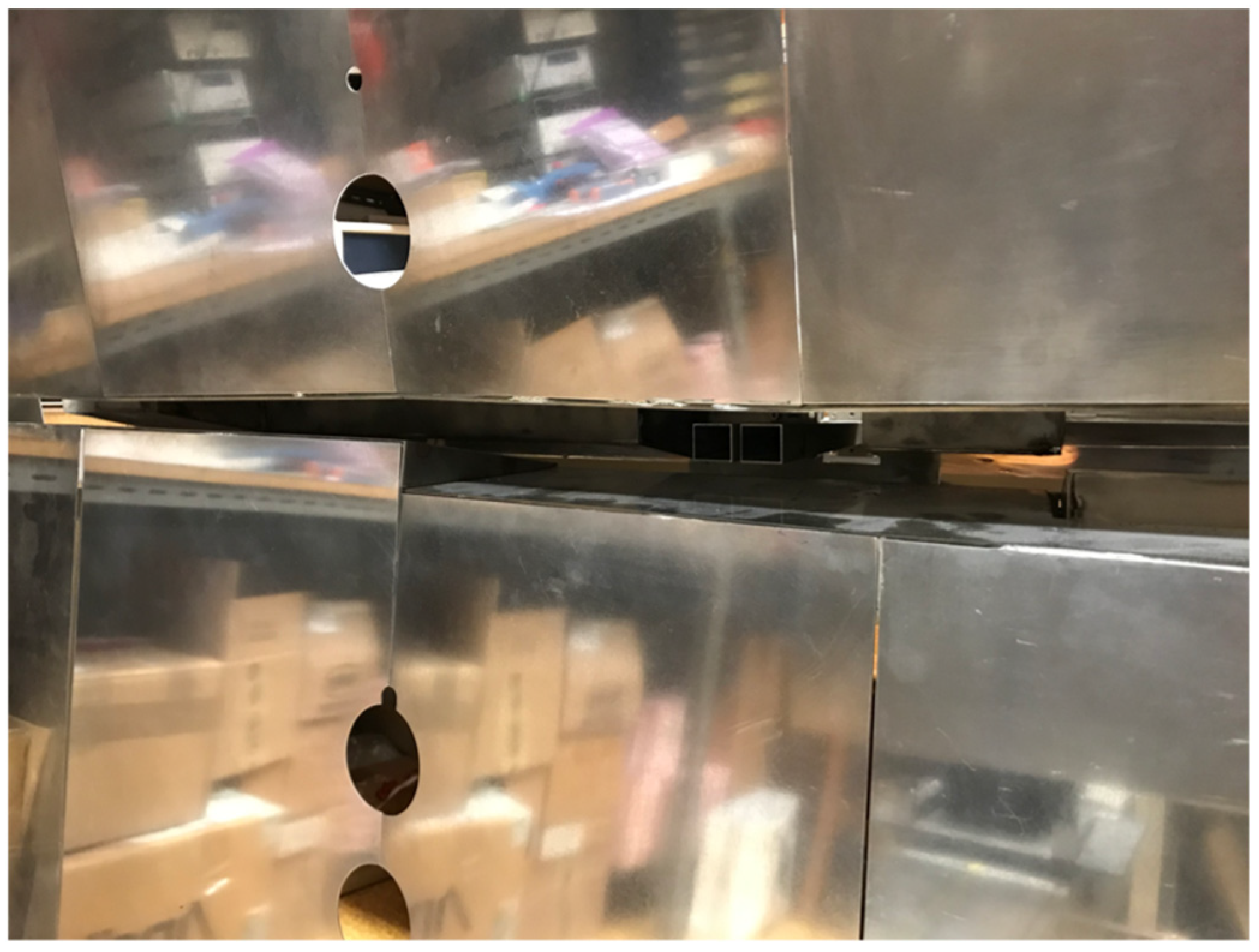

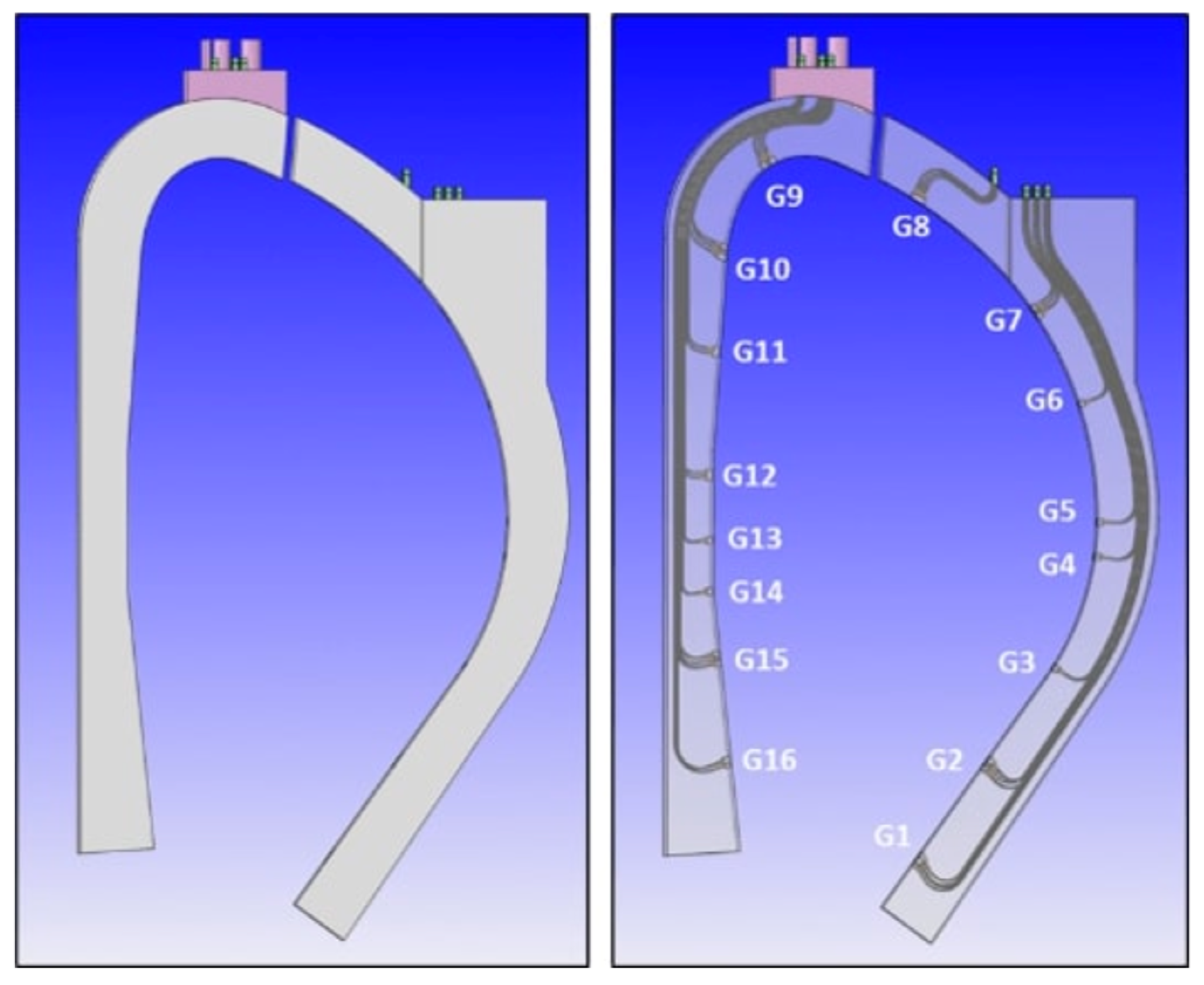
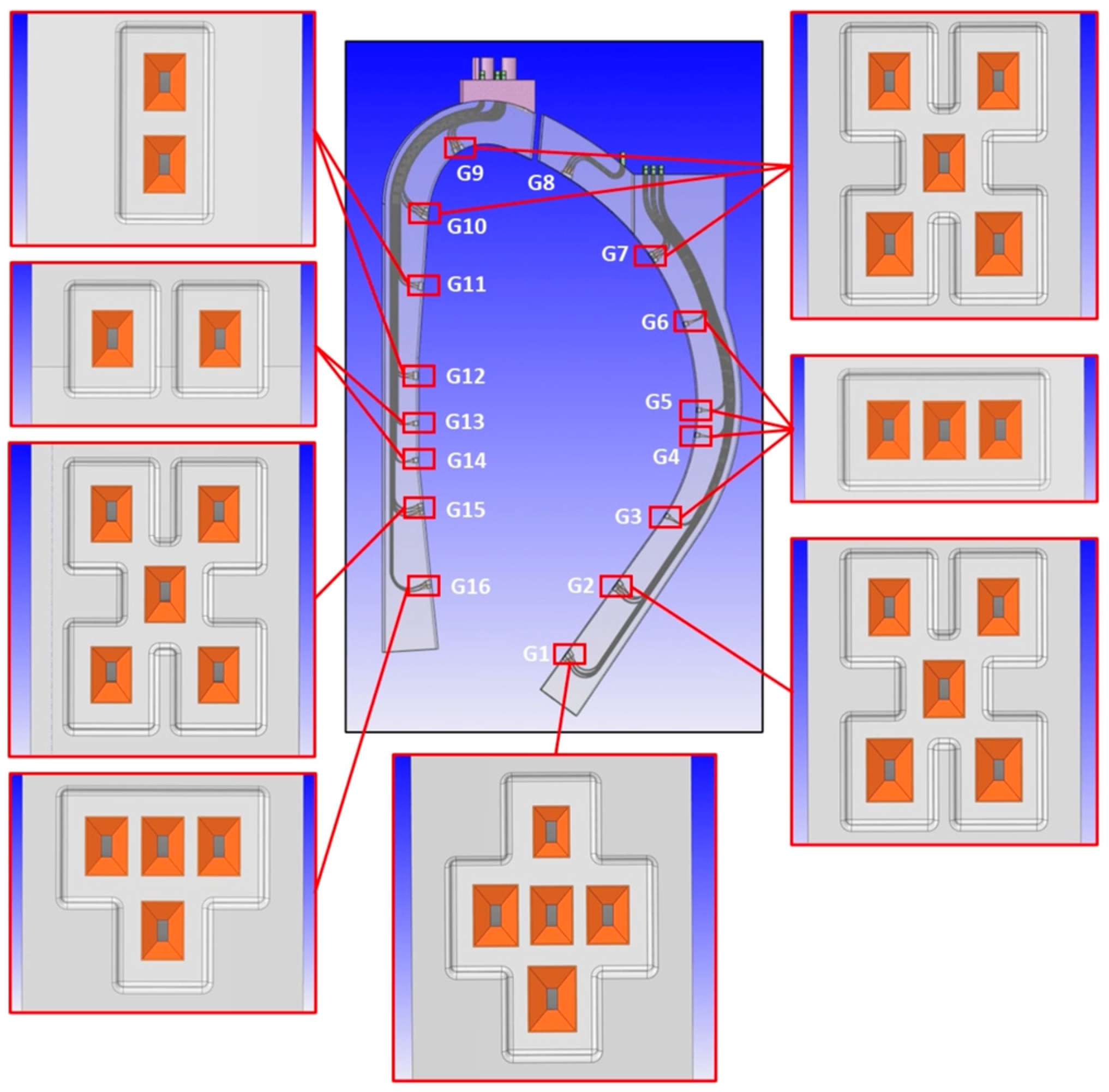

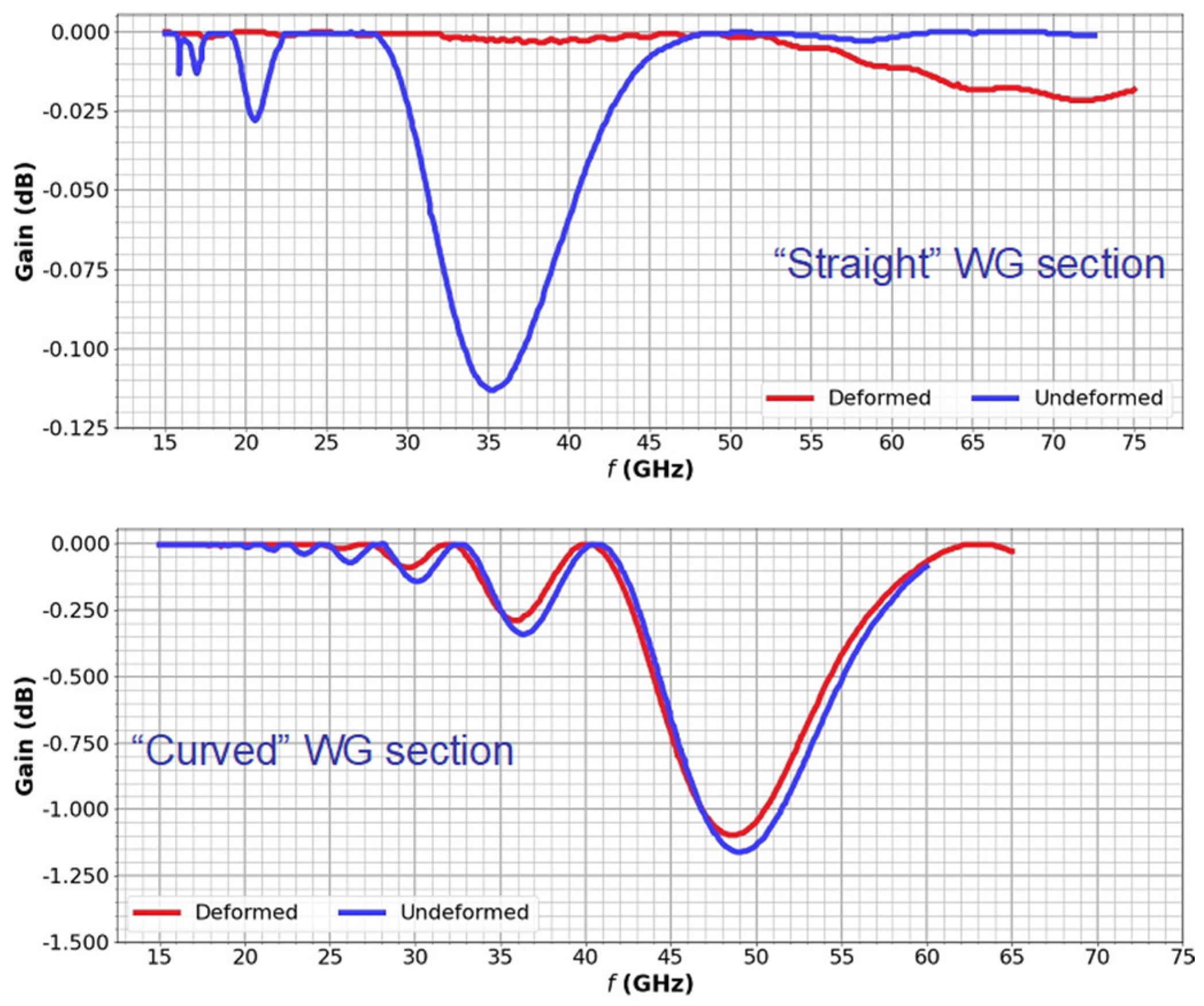

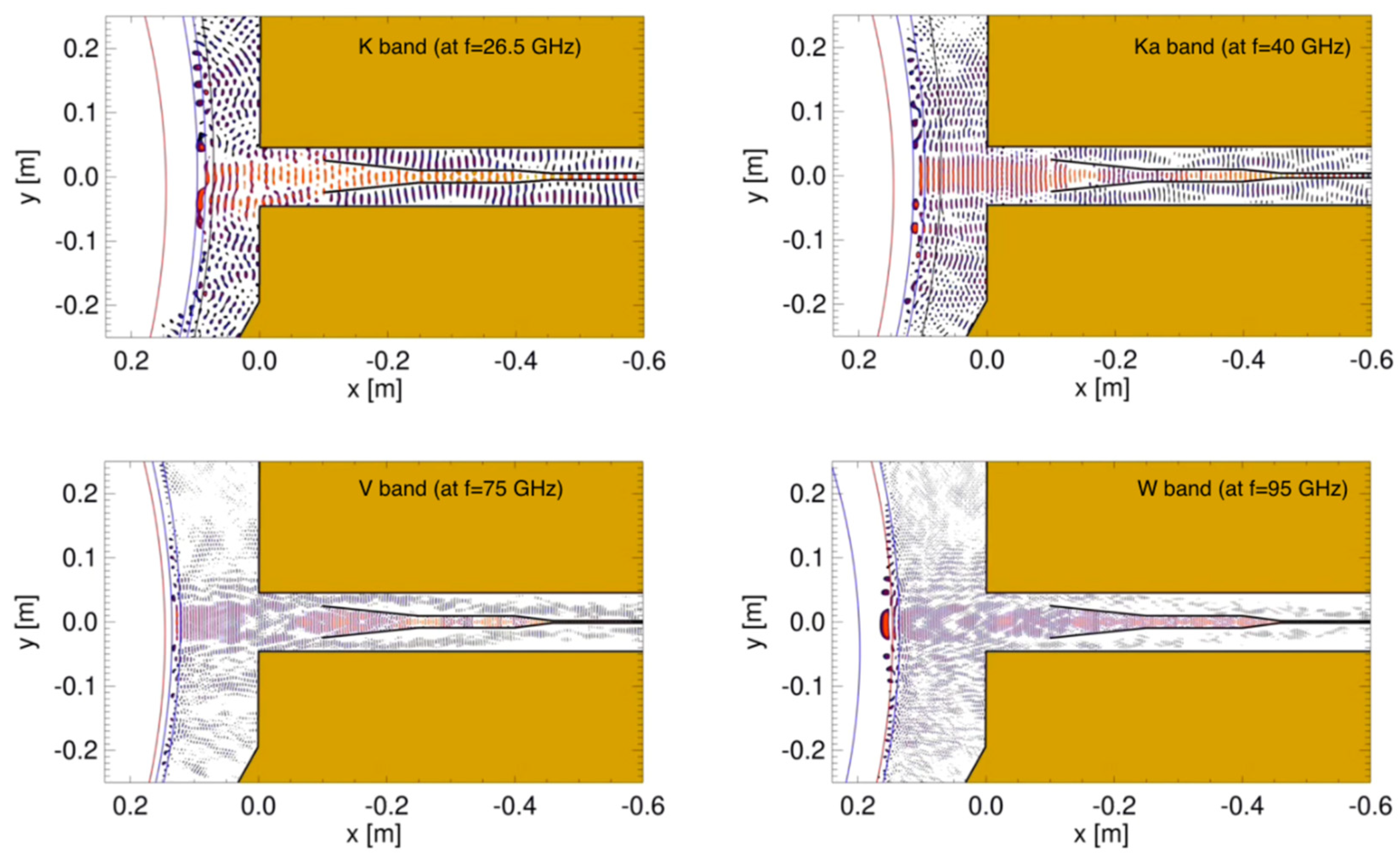

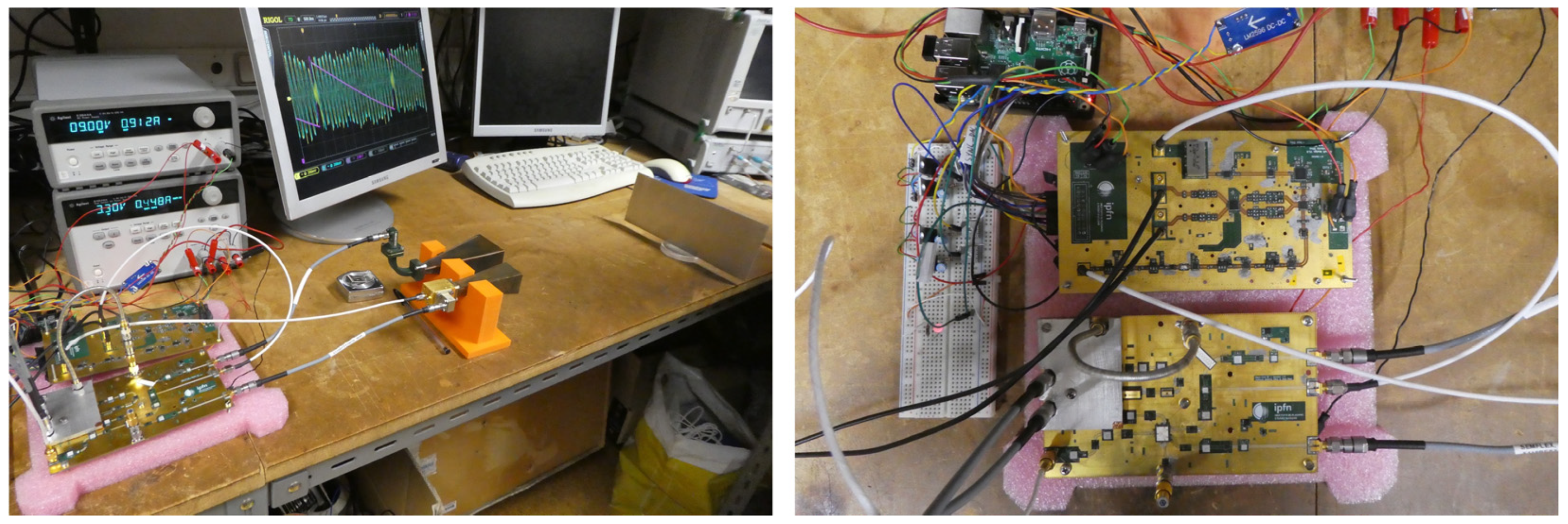
Disclaimer/Publisher’s Note: The statements, opinions and data contained in all publications are solely those of the individual author(s) and contributor(s) and not of MDPI and/or the editor(s). MDPI and/or the editor(s) disclaim responsibility for any injury to people or property resulting from any ideas, methods, instructions or products referred to in the content. |
© 2023 by the authors. Licensee MDPI, Basel, Switzerland. This article is an open access article distributed under the terms and conditions of the Creative Commons Attribution (CC BY) license (https://creativecommons.org/licenses/by/4.0/).
Share and Cite
Gonçalves, B.; Varela, P.; Silva, A.; Silva, F.; Santos, J.; Ricardo, E.; Vale, A.; Luís, R.; Nietiadi, Y.; Malaquias, A.; et al. Advances, Challenges, and Future Perspectives of Microwave Reflectometry for Plasma Position and Shape Control on Future Nuclear Fusion Devices. Sensors 2023, 23, 3926. https://doi.org/10.3390/s23083926
Gonçalves B, Varela P, Silva A, Silva F, Santos J, Ricardo E, Vale A, Luís R, Nietiadi Y, Malaquias A, et al. Advances, Challenges, and Future Perspectives of Microwave Reflectometry for Plasma Position and Shape Control on Future Nuclear Fusion Devices. Sensors. 2023; 23(8):3926. https://doi.org/10.3390/s23083926
Chicago/Turabian StyleGonçalves, Bruno, Paulo Varela, António Silva, Filipe Silva, Jorge Santos, Emanuel Ricardo, Alberto Vale, Raúl Luís, Yohanes Nietiadi, Artur Malaquias, and et al. 2023. "Advances, Challenges, and Future Perspectives of Microwave Reflectometry for Plasma Position and Shape Control on Future Nuclear Fusion Devices" Sensors 23, no. 8: 3926. https://doi.org/10.3390/s23083926
APA StyleGonçalves, B., Varela, P., Silva, A., Silva, F., Santos, J., Ricardo, E., Vale, A., Luís, R., Nietiadi, Y., Malaquias, A., Belo, J., Dias, J., Ferreira, J., Franke, T., Biel, W., Heuraux, S., Ribeiro, T., De Masi, G., Tudisco, O., ... D’Arcangelo, O. (2023). Advances, Challenges, and Future Perspectives of Microwave Reflectometry for Plasma Position and Shape Control on Future Nuclear Fusion Devices. Sensors, 23(8), 3926. https://doi.org/10.3390/s23083926









